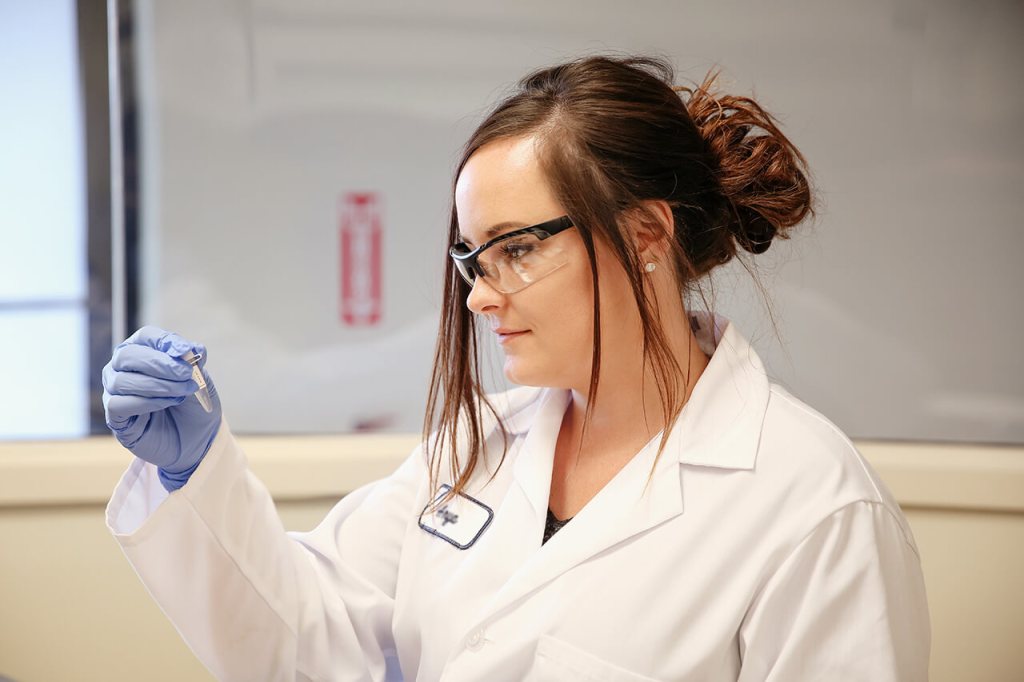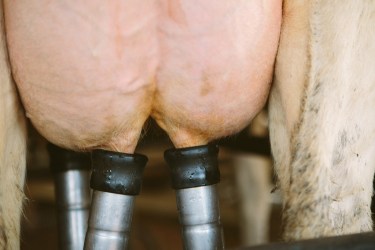Written by Elena Rice, Mark Cigan and Mandy Schmidt for Progressive Dairy, U.S. 🇺🇸
Most humans consider caring for animals a moral responsibility. But for farmers, it is more than this. It is a farmer’s fundamental purpose to nurture and protect animals. Their livelihood depends on being compassionate toward another living creature. A healthy animal is a productive animal.
A dairy herd’s productivity is a consequence of genetic ability and environmental influence, for better or for worse. For example, diseases spreading through calf hutches do not discriminate for genetic potential. A $200 Net Merit (NM$) calf can be afflicted as equally as an elite $1,000 NM$ future donor dam.
Bovine respiratory disease (BRD) is one of the most common and costliest diseases affecting the dairy and beef industries. Even the most meticulous calf raisers can fall victim to the fateful symptoms of BRD: extreme difficulty breathing, high fever and nasal and/or eye discharge.
Despite our best efforts as animal stewards with modern medicine, BRD continues to devastate calf populations with major death losses. Economic losses also occur from decreased weight gain, treatment expenses, labour expenses and reduced production yield later in life.
However, there is great optimism advanced breeding technologies, such as gene editing, can help increase animals’ resistance to BRD and, potentially, similar diseases. Gene editing is the cleanest and most wholesome way to reduce the suffering of animals from disease. As a result, livestock vaccine and antibiotic administration could be dramatically reduced. Animals could have higher quality of life with less illness and unneeded suffering. They will also perform better with fewer environmental challenges to cap genetic potential. Never in animal agriculture history has there been greater opportunity to help animals thrive in a natural state.
Superpowered Mendelian inheritance
People have domesticated animals for food production for thousands of years. Even before the 1860s when Gregor Mendel introduced the concept of genetic inheritance, farmers were unknowingly selectively mating animals for preferred genetic traits. The healthiest and most productive parents created the most reliable food source in their offspring.
Modern technology with genomic testing allows correlation of visible performance with locations on an animal’s deoxyribonucleic acid (DNA). For example, genes which increase milk production and negatively impact fertility have been identified. Modern breeding programs can be strategic when deciding which genes should be introduced to a herd.
Arguably, the most influential tool for genetic evolution in dairy cattle has been “good old-fashioned” artificial insemination (A.I.). Sires are intensively selected for preferred traits. Only the most desirable “genetic trait carriers” create the next generation. Gene editing is not a revolutionary concept compared to the impact A.I. and genomic selection has had. It is simply an evolution of what farmers are already doing: striving to feed the world safely and efficiently.
Precise “genetic tweaks”
Gene editing is an advanced breeding method where scientists make precise tweaks to genetic codes. The power is in accelerating development of new animal and plant varieties. These varieties, in most cases, already exist in nature. However, it would take a long time to introduce them into the currently available germplasm.
Using an analogy for a simplified viewpoint, gene editing can be thought of as the “find and replace” feature used on computers to correct misspellings in word documents. Genetic strands have lines of code “written” into the DNA which tell a cell how to act. Instead of changing letters in a word document, gene editing searches and modifies specific nucleotides, which make up DNA.
Gene functionality, which can sometimes be impaired by naturally occurring genetic mutations, can be improved with gene editing. Revisions can help disable harmful genes and correct mutations responsible for disease development.
Removal of a piece of DNA responsible for interaction with a virus, and enabling virus movement or replication, can ultimately allow the cells to be virus-free. In situations where the desired modification is deleting a section of genetic code, the cellular self-healing process automatically repairs breaks in DNA.
One of the gene editing techniques is CRISPR-Cas9 (clustered regularly interspaced short palindromic repeats and CRISPR-associated protein 9). This technique is adapted from a naturally occurring gene editing system found in microorganisms. It is a combination of Cas9 protein, which cuts the DNA, and programmable ribonucleic acid (RNA), called “guide RNA.” These RNAs can be designed to find exact portions of the genome.
DNA edits can be contained in germline cells, such as sperm cells, or embryos. The changes made to genes would be transmitted to offspring. Future generations would inherit the superior rewritten genetic code through natural breeding.
Creating edits or desirable mutations with CRISPR can be very similar to DNA mutations which already occur in nature. Gene editing is helping biology do what happens normally, just a little bit faster.
Animal agriculture success
During the past several years, significant breakthroughs have been made in gene editing research within the animal agriculture space. The technology has become advanced enough to be carried out successfully in living animals.
For decades, pork producers have battled Porcine Reproductive and Respiratory Syndrome Virus (PRRSv). Pigs who contract the disease have extreme difficulty reproducing, slow rate of gain and high death rates. Millions of pigs die every year from this disease or secondary effects, costing the United States pork industry hundreds of millions of dollars per year. Vaccinations have not been effective in preventing or curing PRRSv.
In 2015, a team of researchers from Genus plc and the University of Missouri collaborated to give the industry relief from this vicious disease. They discovered a protein in pigs called CD163, which the virus needs to survive inside animals. Using CRISPR-Cas9, they successfully edited the gene that makes the CD163 protein from existing in a litter of pigs. When they exposed the litter to PRRSv, all remained healthy.
While progress continues to be made in the hopes of making the PRRSv resistant, life-saving genes available to protect pigs throughout the world, Genus’ priority is safety and human health, and the company is committed to ensuring gene editing creates the desired trait and does not create any unexpected traits.
Genus Plc is seeking FDA approval and will comply with all FDA testing and safety requirements, as well as the requirements of other regulatory bodies in markets around the world. If it reaches commercialisation of disease-resistant pigs from gene editing, they will implement an ongoing monitoring system of the gene-edited animals.
Potential for the dairy industry
Dairy industry applications have been focused on reducing the impact of deadly diseases. BRD is a complex, but common and expensive, cattle disease. It includes a widespread portfolio of pneumonic symptoms, from chronic to fatal respiratory diseases.
Stressors in a young calf’s life, such as weaning or transportation, can predispose calves to an interaction between their defense mechanisms and infectious agents. An initial pathogen, such as a virus, can alter the calf’s immune and nonimmune system to allow the establishment of a bacterial toxin in the lower respiratory tract.
The current Genus project in development is to edit the gene which allows interaction with one of the BRD-associated toxins. While this project is still in the discovery phase, such significant steps towards BRD elimination would have tremendous benefits for dairy industry animal welfare and economic sustainability.
Tremendous potential exists to understand and improve resistance to many farm animal diseases. Innovation of this scale takes teamwork from all aspects of the industry. On the farm level, accurate data collection of performance and health events is critical to genetic trait correlation. Capturing what farmers see cow-side in a consistent format within herd management software helps genetic traits to be found. Calf managers, maternity pen monitors and herdsmen have tremendous power to impact the next biotech breakthrough.
Farmers want the world to have healthier animals. They also want the growing human population to be nourished with a safe and sustainable food supply, despite diminishing resources. Gene editing supports both. It is an animal agriculture innovation with mutual benefits to consumers globally.
Mark Cigan is the trait development director for Genus plc. Mandy Schmidt is a North American dairy genetic services specialist for ABS Global.
Elena Rice is the Chief Scientific Officer, and Head of R&D with Genus plc.
Originally published on Progressive Dairy






